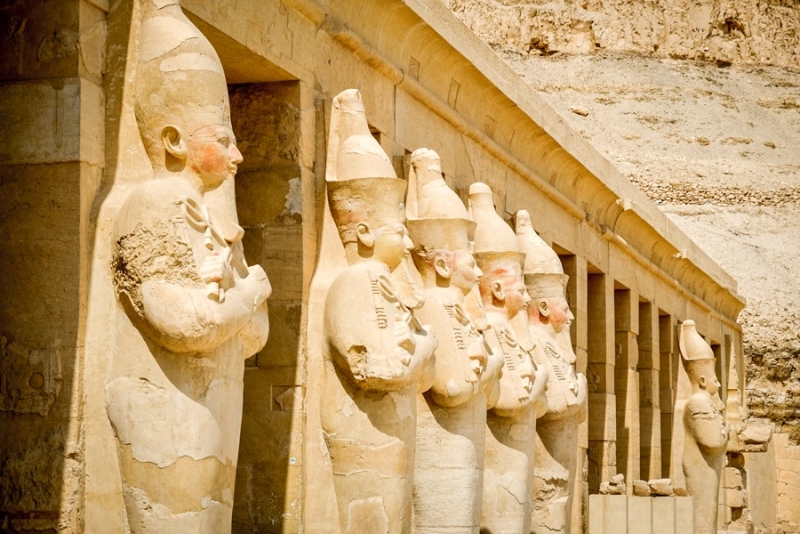
Mortuary Temple of Hatshepsut
Hatshepsut the famous Egyptian queen who became pharaoh, ruled during the early 18th dynasty of the new kingdom, her career first as regent for her stepson nephew/Thutmose III, and her later joint role with him lasted less than 15 years but it is region that is writ large in History . She began by announcing that the god Amun had spoken to her, saying, "Welcome my sweet daughter, my favorite, the king of Upper and Lower Egypt, Maatkare, Hatshepsut. Thou art the King, take possession of the Two Lands.
Hatshepsut's greatest achievement is the Mortuary Temple at Deir el-Bahri, Hatshepsut's temple was also known as Djeser-Djeseru, (Holy of Holies)built in an extremely innovative but elegant architectural style, against and Into the high cliffs that rose behind It. It is built on the cliffs of the valley near the Peak of Thebes. There, Hatshepsut had her life story inscribed. Beginning with her reign, the independent evolution of the royal funerary temple can be followed.
Hatshepsut temple consists of three levels; it also contains the home of two statues of Osiris, sphinx avenue and colonnades with Square Pillars. It holds the shrine of Hathor that has a hypostyle hall with twelve beautiful columns; and the chapel of Anubis that has a hypostyle hall with fluted columns; there is also a sanctuary of Amun.
The walls were all painted with a colorful account of trading expedition to Punt,which was on the coast of Africa near the Red Sea, where the images showed ships of her army led by her general, Nehsi. Also, the trading expeditions brought back vast riches including ivory, ebony, gold, leopard skins and incense.
She was more interested in ensuring economic prosperity and building and restoring monuments throughout Egypt and Nubia than in conquering new lands. Hatshepsut even had to wear the clothes, accessories, and outfits of men. The queen stated to her people that she was the son of the god Amun.

